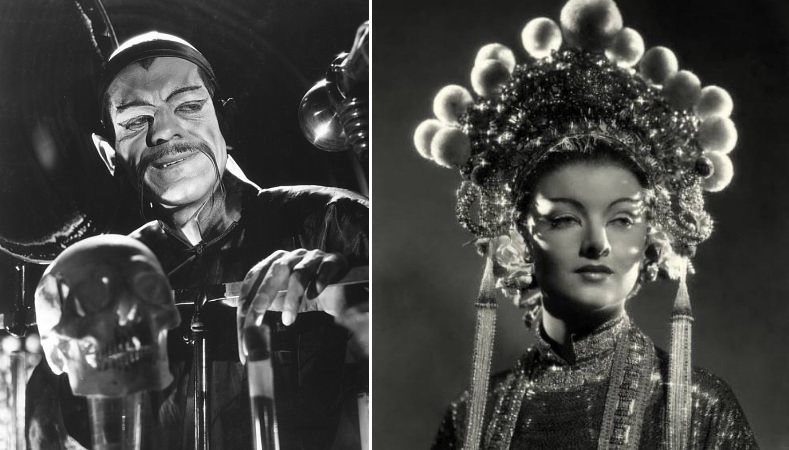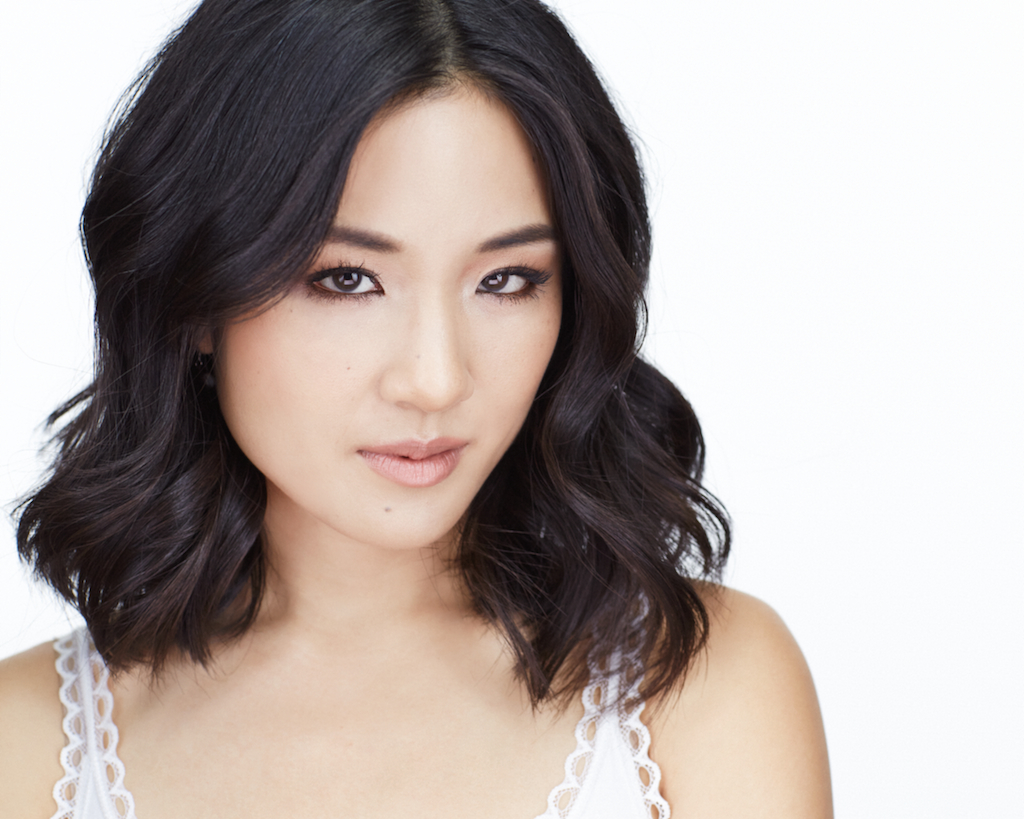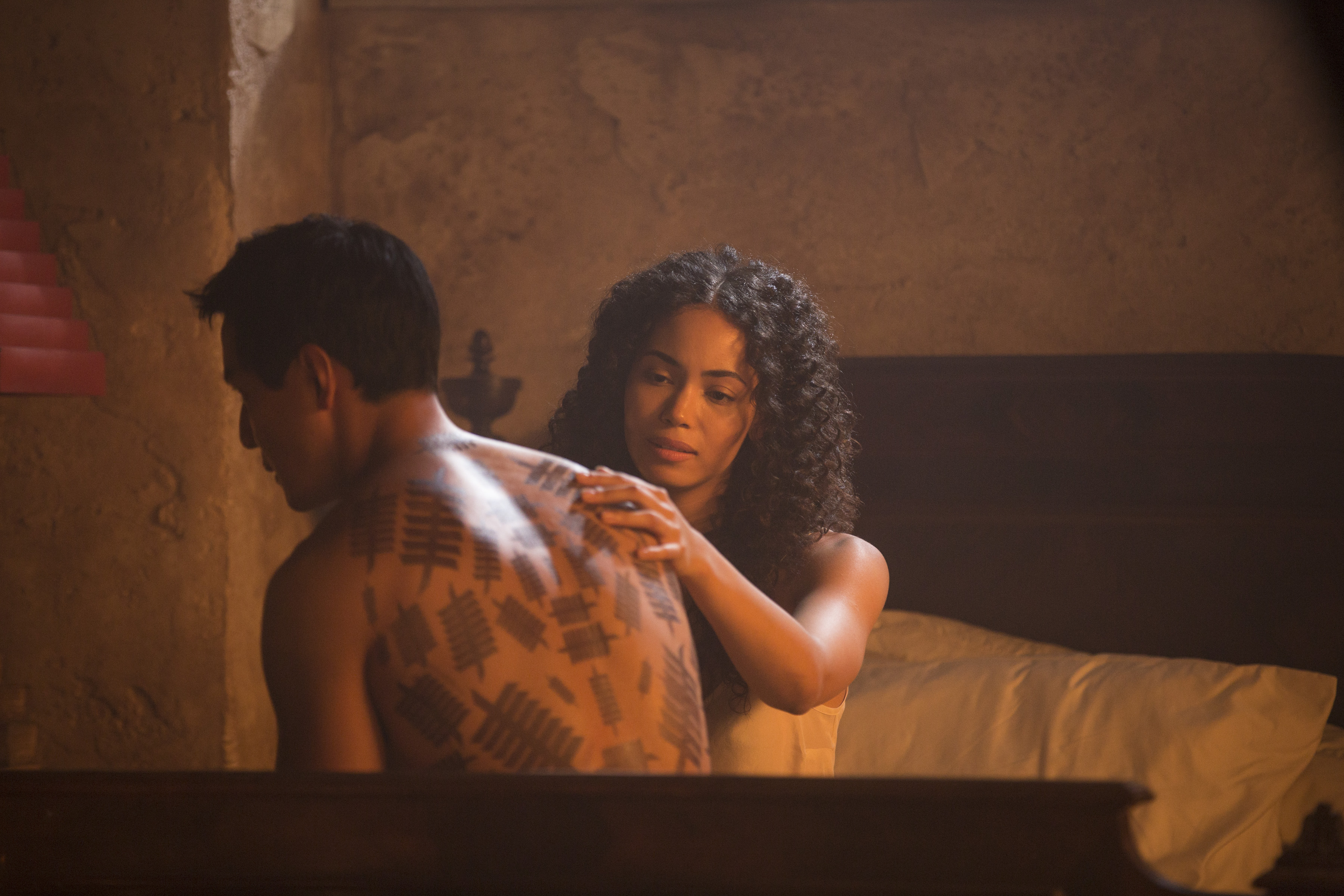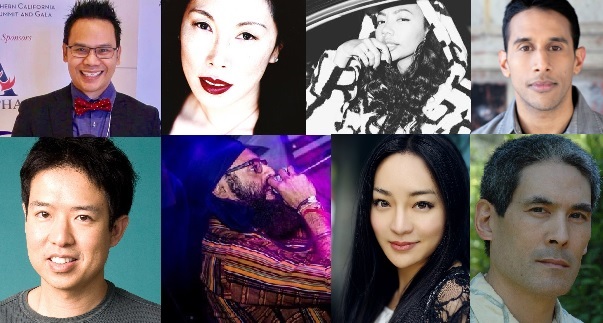The pain of exoticism

From Fu Manchu to the Dragon Lady, from the mystic to the terrorist, Hollywood has embraced stereotypical, damaging stereotypes of Asian characters based in the xenophobic propaganda of the past.
“It’s a long, deep-rooted, embedded tradition, that has fed on itself, perpetuated itself, and has never had (until recently), any opposition, or motivation for change. It goes back before ‘Hollywood,’ to preceding forms of media or entertainment (literature, theatre, etc.),” wrote Tashima. “This country has been dominated by Eurocentric values throughout its history, so any truthful Asian voice or perspective has never had a chance to oppose, or offer any balance.”
Wable wrote that using these stereotypes isn’t just racist; it’s also lazy.
“The use of stereotypes to represent Asian characters is another manifestation of how POCs narratives are stripped of agency and dignity. It’s representative of an intellectual sloth on the part of white storytellers to deem any deeper examination of their Asian characters unwarranted because, most likely, the story isn’t about them in the first place,” he said.
“If the Asians serve as plot devices to further the white character’s narrative, the storyteller can treat them as an afterthought and revert to the stereotype as shorthand to achieve the desired effect. This tendency is very much tied up with the colonial structures that functioned as the mediums through which the white world interacted with Asians,” he said. “In most cases, it’s only been a hundred years or so that these structures gave way, at least formally, to independent nation states that went on to forge their own identities. But the structures have endured psychologically, both in the minds of the colonizer and the colonized (for e.g., the widespread use of fairness cream among brown Asians and Africans, as evidence of internalized racism). The consequence that this gaze brings with it w/ respect to brown Asian characters is that we are often represented as obsequious, bookish, goofy, creepy, emasculated (in the case of males), or exotic, helpless, prudish, jealous and naive (in the case of females).”
Sethi wrote about how today’s xenophobia has directly affected him.
“Brown Asian characters have historically been erased from the narratives, as well as dumbed down as if they do not play a significant role due to their brown skin. That is shameful,” he wrote. “Being a brown, turban wearing bearded man, I see the direct impact of that type of casting in my everyday life. I think that casting directors are controlled by those above them and no one is being creative. Obviously it’s easy to pin a brown man with a turban and a beard in that type of role. A real casting agent with real creativity will think outside the box and work to destroy that narrative that most people know is not true!”
Keodara wrote that the state of Asian representation in entertainment is something the industry has to reckon with. “Unconscious bias and ‘tradition,’ meaning some of our well-meaning ‘friends’ grew up in the same racist America and some of that bias is entrenched in [Hollywood’s] thinking, and secondly, it’s what they’ve done for a very long time and feel comfortable in continuing to do because as movie budgets grow bigger Hollywood feels the pressure to make ‘safer and safer’ choices and because status quo equals ‘safe,” he wrote. “If the American public is accustomed to seeing Asians in one way, then it’s cheap and easy to just let the continue to see what they’re used to. To be frank, I mean this as a condemnation of the American public. This is 2016, if you’re shelling out your hard-earned money to see movies that whitewashes Asian characters and turn the other cheek, then you’re just as guilty.”
With so much going wrong, how can change be made? First, it starts with recognizing that Asian America includes more than just descendants of Chinese and Japanese immigrants.
“… ‘Asian” in Hollywood really means “East Asian”. South & Southeast Asians are nearly erased from American media. A lot of the stereotypes associated with Asians in media come from ignorance that, well, stem from racism,” wrote Jackson. “Most Americans don’t understand just how large and diverse “Asia really is. They don’t understand that China and Japan are separate countries with different cultures. They think everything is the same, every country has the same culture and philosophies. And that ignorance comes from lack of representation in the media! It’s a cycle that keeps going ’round & ’round and will never break until accurate representations of Asia are shown & our stories, told.”
Second, as many have written, it takes people speaking out about the lack of opportunities for Asian actors.
Some have welcomed actors like Lewis Tan, Constance Wu, and George Takei for using their platforms to raise awareness about the lack of Asian representation.
“Actors using platform for change is important and the first revolutionary step towards equity within television and on the big screen,” wrote Sethi. “Equity amongst roles.”
“I think they’re doing a really good job,” said Li. “…I think we need people like that to keep voicing [their sentiments] because it’s not about bankable stars; you make a star, and you make a good enough production to have people supporting it. It’s going to make money anyway.”
“What they said about Ghost in the Shell and that there are no bankable Asian stars, that doesn’t really stand,” she said. “With The Hunger Games, Jennifer Lawrence wasn’t a bankable star yet. It’s about the best person suited for the role. I think that the stars speaking out, who are doing their part, I think that’s amazing. I wish I can do my part as well in the future when I get big.”

“I think the main factor that’s contributed to such a noticeable spike in Asian American actors/creatives speaking out about whitewashing is social media and its ability to show the industry’s gatekeepers that POC audiences are ‘woke’ and finally able to commensurate over the frustrations of rarely seeing fully realized representations of our lives on television,” wrote Wable. “The few Asian Americans who have reached a level of visibility and do use their platforms to advocate for that change, whether it be through confronting the issues head on, or simply, shining a light on fellow lesser-known Asian American creatives, realize that their most loyal fan bases are largely made up of people who have been waiting to see their lives reflected in mainstream culture. And the gatekeepers are realizing that this level of engagement by POCs actually helps their bottom line so it’s not ‘career suicide’ for an Asian American celebrity to speak frankly on these issues anymore since the numbers make the argument for inclusive storytelling even stronger.”
Jackson, Tashima, and Keodara also contribute the rise of awareness about Asian Americans in Hollywood to social media.
“I think most of the change comes from social media. Before social media, there was no outlet that allowed people to voice their opinions or experiences to a mass audience. If you wanted to reach a mass audience, you needed to appear in a magazine, newspaper, television, etc. Now, with social media, you’re able to do that instantly,” wrote Jackson. “I think that more actors and actresses are using their platforms for change simply because they can. They can call for change and have thousands of people around the world support them. I think we feel more comfortable speaking out now because there are thousands of people, whom we can interact with, that can agree with and push for our call for change.”
“Beyond just the fact that we (POC) are tired of it, I think there are two factors that are contributing. One is social media. That has leveled the playing field in terms of expression, and publicity. It’s no longer limited to coverage in ‘The Press,’ or costly publicist or PR budgets. Anyone with something interesting or relevant can reach millions of people, with at tweet or post,” wrote Tashima. “Second is that we have more prominent artists. We’ve never had a George Takei, with his 1.8M followers, and name recognition that comes with it, or a Constance Wu, who is the star if a successful TV network sitcom. Through them, we’re finally being heard.”
“Insofar as Asian American actors are concerned, first is their establishment as incredible actors and pillars of the acting and filmmaking community. They have achieved the reputation and legacy that gives their words weight that wasn’t there forty or even twenty years ago,” wrote Keodara. “Second is accessibility. Celebrities can connect to their fans more swiftly and directly than ever before through social media, and those fans can then propagate their messages at an exponential rate. In print media, you’d have to convince the papers and magazines that you’re worth reporting on; the only barrier to entry now is how effectively you can utilize 140 characters to convey your message. Third is a social awareness. People, especially young people, care more now about seeing proper representation of POC. There is not only a desire but a demand to see better representations. These three things combined give Asian American actors and actresses means and motivation to fight for change.”
Lee is less concerned about what actors say on social media and more about what is “creatively and commercially what’s best for the movie” in terms of driving Asian careers in Hollywood.
“Look at a film like [Bernardo] Bertolucci’s The Last Emperor that has spawned a generation of Asian American stars such as John Lone, Joan Chen, Dennis Dun, Vivian Wu, Victor Wong and Lisa Lu that we still love,” he wrote. “Mind you, that was made in 1987. That’s the level of creative feat that culture creators and Hollywood should aspire toward.”
Also, despite the amount of voices out there spreading awareness, there’s still a wall in place for many Asian actors when it comes to landing meaningful roles.
“Unfortunately, the reality is that it’s everyone’s bottom line that will ultimately carry the day,” wrote Wable. “[W]hen I still hear from my friend who tried to refer me to a talent agency, that it passed on me because ‘they already have a brown Asian male’ who plays my age on their roster, it’s clear to me that the change will most certainly be slow and incremental no matter who is on that soapbox at the top.”
Whether people believe the actors who are speaking out are doing so from a genuine place or from a more politically correct stance, what they are writing and saying in interviews taps into something that many Asian Americans feel every day; that they are constantly the Other.
How much is Hollywood to blame for this feeling?
“Let’s not give Hollywood that much credit or blame Hollywood that much,” wrote Lee. “For generations people blame Hollywood for inspiring violence in the society. Well, sadly, violence, like racism and stereotyping, in America is real. The question is can Hollywood and independent filmmakers rise above the societal banality and inspire otherwise.”
Others, though, believe that Hollywood is, in fact, at least partly to blame for generations of people feeling ostracized in their own skin.
“[Asian people] on TV is not proportional. So a lot of kids growing up, they don’t see their own people on TV,” said Li. “…They feel like outsiders. I don’t think that’s good socially.”
Wable addressed how Hollywood’s reinforcement of stereotypes become internalized, not just with Americans in general, but with Asian Americans as well.
” I find myself struggling with this internalized racism every time I sit down to write a brown Asian character. The use of stereotypes to represent Asian characters is another manifestation of how POCs narratives are stripped of agency and dignity,” he wrote. “It’s representative of an intellectual sloth on the part of white storytellers to deem any deeper examination of their Asian characters unwarranted because, most likely, the story isn’t about them in the first place. If the Asians serve as plot devices to further the white character’s narrative, the storyteller can treat them as an afterthought and revert to the stereotype as shorthand to achieve the desired effect. This tendency is very much tied up with the colonial structures that functioned as the mediums through which the white world interacted with Asians.”
Wable wrote that much of the stereotypes stem from colonization. Even though the times of colonization might be over, he wrote, “…the structures have endured psychologically, both in the minds of the colonizer and the colonized (for e.g., the widespread use of fairness cream among brown Asians and Africans, as evidence of internalized racism). The consequence that this gaze brings with it w/ respect to brown Asian characters is that we are often represented as obsequious, bookish, goofy, creepy, emasculated (in the case of males), or exotic, helpless, prudish, jealous and naive (in the case of females).”
Long, Tashima and Keodara shared the similar sentiments.
“It just perpetuates stereotypes which continually keeps us in the place of ‘the other’ never taking into account that we are human beings that have the same goals, issues, dreams like everyone else,” wrote Long.
“Race representation is important to our youth. They must see themselves in order to hope for a better tomorrow. I think we are stuck where we are because there has been too much repeated generation after generation,” wrote Tashima. “This cry for diversity is not new. Also, it limits our expression, and growth through art. It is untruthful. It is short-changing the audience. There is so much more to tell, for us to learn, for all to appreciate–other than just the white male hero or romantic interest.”
“Just [recently] Fox News sent correspondent Jesse Watters as part of the O’Reilly Factor program to interview Asian Americans in New York City’s Chinatown about the [then] upcoming presidential election and it had some of the worst racist stereotyping of Asians I’ve seen in recent memory. Worse still was Bill O’Reilly brushing it off as ‘gentle fun.’ Watters said, ‘it’s all in good fun,’ but that would only be true if the subjects of your fun were in the joke,” wrote Keodara. “The harm of Hollywood’s whitewashing and stereotyping comes in pushing off Asian frustration and resentment with stereotypical treatment as any form of ‘fun.’ This was one of those opportunities for listening to Asian Americans. I swear if an Asian person was given the opportunity to review the tape before airtifme, that segment would never have seen the light of day. But, you have a couple of privileged white boys bullying Asians for a few laughs and for ratings purposes. It’s despicable!”
Jackson also added that the limitations of Asian representation in Hollywood limits how she’s seen as a biracial black/Asian woman.
“In Hollywood, I’m only really allowed to play African-American. There are some exceptions, however with such a lack of representation for other races, 99% of the time I am auditioning as a Black girl. I’m not allowed to audition as an Asian girl, ever, even though that is literally half of my identity,” wrote Jackson. “I have half white/half Asian actor friends that tell me that they’re ‘too Asian to play white’ or ‘too white to play Asian.’ In addition, interracial relationships in television and film almost always include a white person. Most interracial couples in media are white/black, white/Asian, etc. There is so little representation for interracial couples of color. In general, I feel that there needs to be more stories told about biracial or mixed identities because we have very different experiences from our ‘full-blooded’ peers.”
Wable agrees.
“I’ll lead with a disclaimer that I’m not biracial, but I have noticed that biracial identities are almost non-existent in mainstream media and I wonder whether that’s because biracial coupling is still very taboo in this country, and perhaps, globally with a few exceptions,” he wrote. “To acknowledge a character’s biracial identity, one would imagine you’d have to acknowledge their lineage and I think Hollywood is so risk averse, they’d rather steer completely clear of that topic if they can avoid it.”
Wable believes that the lack of biracial characters in Hollywood is part of society trying to keep a racial status quo. “Staying with my theme of tracing this phenomenon back to its roots, I think it’s linked to the constructed white fear of miscegenation which introduces too dangerous a possibility that closes the gap between whites and POCs, that brings POCs into the fold as humans on equal footing with whites. It’s much easier to have a clear distinction between the races even though we all know that’s not how normal society operates,” he wrote. “This explains why biracial actors undergo a sort of erasure/scrubbing that makes them belong to one race, and if they are fortunate enough to ‘pass’ as both white and ‘ethnic’ all the better for their careers. I think what needs to change is just creators being bold enough to tell stories about biracial couples.”
Wable named two films that are already doing this, Loving, staring Ruth Negga and Joel Edgerton in the real life story of the Lovings, who fought for their right to marry, and the comedy-horror Get Out by Jordan Peele which features a black man visiting his white girlfriend’s spooky family in a part of town where several black men have already gone missing.

Combating internalized racism and a lack of representation can be reduced down to one simple thing: giving Asian writers, actors, producers and directors more opportunities to create the narratives they want to see.
One of the current major examples of an Asian narrative being written from a non-Asian perspective is the upcoming live-action Mulan adaptation.
“What needs to change is Hollywood studios need to stop hiring white screenwriters to write POC stories such as the recent controversy with Disney studios hiring two white ladies who rewrote Mulan’s story placing a white dude at the center of Mulan’s legend. That’s a tired trop that needs to be laid to rest,” wrote Keodara. “Disney has since revealed that they’ve hired two new writers but they are still white. Hollywood needs to start hiring Asian American writers to write Asian stories. And, in the alternative, at the very least hire some Asian American consultants to maintain cultural sensitivity to the material.”
The changing demographics are also begging for their wants to be heard by Hollywood.
“[D]emographics are changing, and audiences will dictate a different idea, and also, creative forces are changing, and will be expressing different viewpoints. So, my belief is that it is inevitable that it will change,” wrote Tashima. “The question may be, how can we speed things up? My answer to that is, keep speaking up. Keep creating. Keep supporting our own artists.”
Hollywood is just now only beginning to address the changing demographics thanks to April Reign’s #OscarsSoWhite hashtag, which became extremely popular after films like Straight Outta Compton and Beasts of No Nation failed to garner any Oscars, despite their critical and financial success.
“I think this past year #Oscarssowhite coupled with the casting of Scarlet Johansson, Emma Stone, Tilda Swinton became the tipping point that saw a flood of outcries and outrage everywhere,” wrote Long. “It was a galvanizing confluence of events and it is important that our high profiles and we as a community keep ‘squeaking the wheel.’ The longer the conversation continues it will educate, enlighten and ultimately effect the change that has been too long in coming.”
“We owe some of this progress to April Reign for starting the #OscarsSoWhite hashtag. The success of that movement has emboldened Asian Americans that we too deserve our day in the sun,” wrote Keodara, who also thanked the Asian American members of the Academy (including Long) for demanding an apology from host Chris Rock, who made some discriminatory jokes at the expense of Asian American kid actors, and other actors for using their platforms to advance change.
“I’d be remiss if I didn’t [also] mention Ming-na Wen and Constance [Wu] for risking their careers to lend their voices and spoke up to demand change which culminated in the #whitewashedOUT movement,” he wrote. “…Hollywood has an aversion to risk, which is understandable, but is precisely the thing that needs to change. But there have been study after study after study that should have laid those fears to rest because each of those studies showed that diversity is good for business.”
As Long succinctly put it, “It’s really about raising the consciousness one mind at a time.”
Next: The #OscarsSoWhite effect and the Academy
